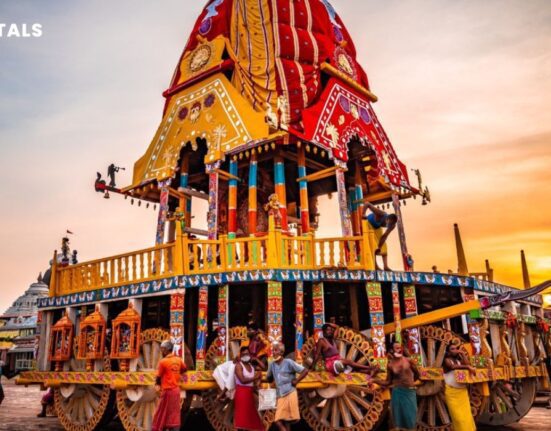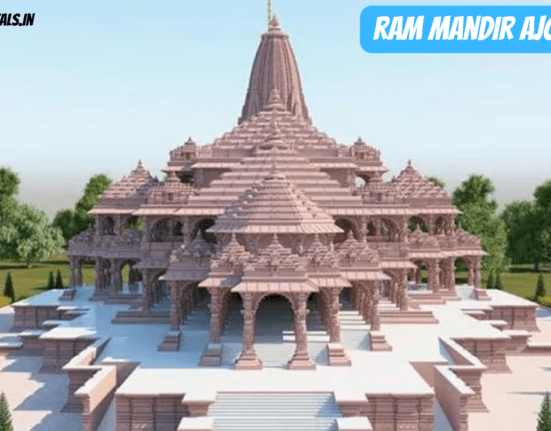Mahadev. Shiva – The Exterminator of Evil. Although known by many titles, the Supreme Being is ultimately. Hindus frequently come with the term “Jyotirlinga” during their childhood. Hindus hold Shiva’s Jyotirlinga in the highest regard. Lord Shiva is worshipped in the shape of a Jyotirlingam at shrines called Jyotirlingas. You might now be wondering what a Jyotirlingam is. It is The Almighty’s brilliant symbol. Jyoti and linga both refer to light and signs, respectively. Jyotirlinga is Lord Shiva’s brightness.
Table of Contents
Introduction
The Vishnu Purana makes reference to the Legend of the “Jyotirlinga.” Lord Shiva had created a massive pillar of light and instructed both Lord Vishu and Lord Shiva to locate its ends in both directions when they were discussing who is the ultimate being. Lord Brahma responded by lying that he had found the solution, but Lord Vishnu conceded defeat. Lord Shiva then cursed Lord Brahma, saying that despite being the universe’s creator, he would not be adored. The Jyotirlingas at this location are thought to have emerged from Lord Shiva’s illimitable light pillar. By the name Somnath, he rose to fame. Since then, the Somnath Jyotirlinga has undergone numerous periods of destruction and reconstruction.


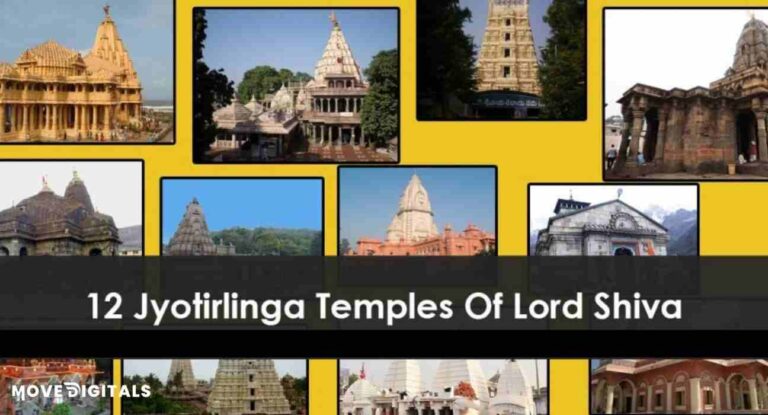

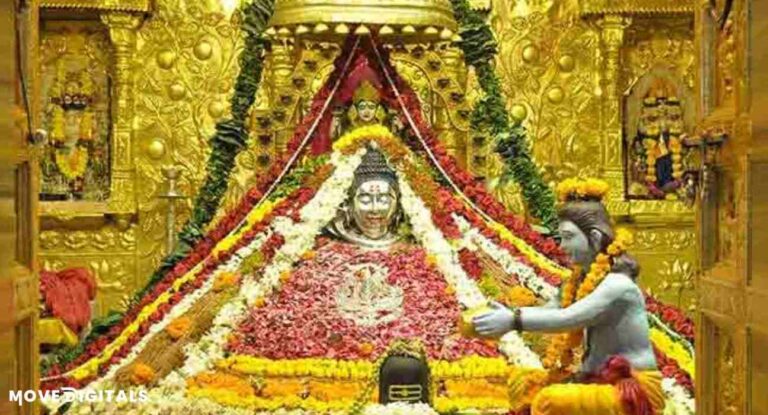

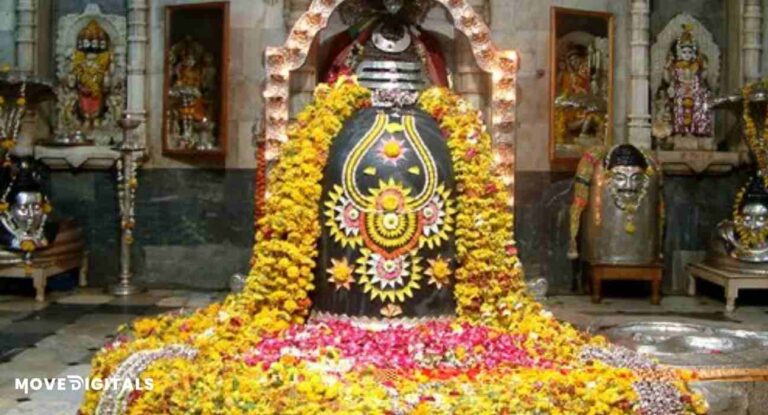

Somnath Jyotirlinga Temple
Somnath temple is a Hindu Temple situated in Gujarat, India’s Veraval district of Prabhas Patan. It is considered to be the first of Shiva’s twelve jyotirlinga, making it one of the holiest pilgrimage destinations for Hindus. This Gujrat jyotirling is a revered pilgrimage spot in the nation. The creation of this Jyotirling in Gujarat is described in a tale. The moon, who was married to 27 of Daksha Prajapati’s daughters, was said to have loved Rohini the most of all of them, according to the Shiva Purana. When Prajapati observed his disregard for the other spouses, he cursed the moon, wishing it would go completely dark. Shiva granted the disturbed moon’s wish to regain his lost lustre and shine after he and Rohini visited Somnath and worshipped the Sparsa Lingam. Lord Shiva took on the name Somchandra at his request and stayed there forever. By the name Somnath, he rose to fame. Since then, the Somnath Jyotirlinga has undergone numerous periods of destruction and reconstruction.
Kashi Vishwanath, Varanasi
The Kashi Vishwanath Temple is located in the bustling streets of Banaras, a sacred city (Varanasi). The Shivalinga continues to be the centre of pilgrims’ devout attention, surpassing the Ghats and Ganga of Varanasi. The first Jyotirlinga is thought to have manifested its superiority over other gods, pierced the earth’s crust, and blazed upward in Banaras. The locals think that individuals who pass away in this temple are liberated because it is said to be the one that Lord Shiva loves the most. Many people think that Shiva, who bestows happiness and freedom, lived here. Despite being repeatedly renovated, this temple has maintained its supreme power.
Mallikarjuna Jyotirlinga, Andhra Pradesh
Among the 12 Jyotirlingas in India, the Mallikarjuna Jyotirlinga Temple is situated atop Shri Saila Mountain, by the banks of the Krishna River, and is known as Kailash of the South. The temple of Mallikarjuna contains the gods Shiva and Bhramaramba or Parvati and is one of the 52 shakti peeths of Sati. It has stunning architecture and sculptures, decorative pillars known as gopurams, and a mukha mandapa hall. Unquestionably, one of the most important Shaivite shrines in the nation is Mallikarjuna jyotirlinga.
Rameshwar Jyotirlinga, Tamil Nadu
The island of Rameshwaram, off the Sethu coast of Tamil Nadu, is home to Rameshwar Temple, the southernmost of the 12 Jyotirlingas. This temple is well-known for its architecture, particularly the 36 theerthams, towers, and lengthy, intricate hallways. This has long been a revered pilgrimage site, and many people compare it to Banaras. Ramayana and Ram’s triumphant return from Sri Lanka are strongly related to this Jyotirlinga.
Kedarnath Jyotirlinga, Uttarakhand
The Kedarnath Temple, one of the holiest pilgrimage destinations in India, is situated on a mountain called Kedar at a height of 12000 feet in the Rudra Himalaya Range. About 150 kilometres separate it from Hardwar. Only six months out of the year are open at the Jyotirlinga temple. It is customary for pilgrims travelling to Kedarnath to first stop at Yamunotri and Gangotri before bringing holy water to Kedarnath for worship. According to tradition, Lord Shiva established a permanent residence in Kedarnath in the form of this Jyotirlinga after being satisfied with the strict penance of the Nara and Narayana incarnations of Lord Vishnu. People firmly think that by praying at this location, one can fulfil all of their desires.
Mahakaleshwar Jyotirlinga, Madhya Pradesh
The deep Mahakal forest in Ujjain, Madhya Pradesh, beside the Kshipra River, the Mahakaleshwar Temple is situated. In Central India, this Jyotirlinga in Madhya Pradesh is a significant place of worship. The origin story of this Jyotirlinga is the subject of several stories. According to the Puranas, a five-year-old boy named Shrikar was mesmerised by the king of Ujjain’s devotion to Lord Shiva. Shrikar began worshipping as Shiva after taking a stone. Despite numerous attempts to discourage him in various ways, his adherence grew. Lord Shiva was pleased by his devotion and took up residence in the Mahakal forest as a Jyotirlinga. In addition, Hindus value the Mahakaleshwar Temple for another reason.
It is one of the seven “Mukti-Sthals,” or locations that can set a person free.
Omkareshwar Jyotirlinga, Madhya Pradesh
One of the most revered Jyotirlinga, Omkareshwar Temple, is situated in Madhya Pradesh on an island in the Narmada River called Shivapuri. The Devas and Danavas (Gods and Demons) fought a tremendous war, which the Danavas ultimately triumphed, according to Hindu texts. For the Devas, this was a serious setback, and they prayed to Lord Shiva as a result. Lord Shiva, who had heard their prayer, manifested as Omkareshwar Jyotirlinga and vanquished the Danavas. Hindus see this location as being extremely sacred as a result.
Baidyanath Jyotirlinga, Jharkhand
Vaidyanath Temple is situated in the Santal Parganas region of Jharkhand in Deogarh. One of the most revered Jyotirlinga shrines, its followers hold the view that genuine worship of the shrine frees one from all anxieties and suffering. People hold the view that by worshipping this Jyotirlinga, one can achieve moksha or salvation.
Bhimashankar Jyotirlinga, Maharashtra
You can find Bhimashankar Temple in the Sahyadri area of Pune, Maharashtra. It is thought to be the river’s source and is situated on the Bhima River’s banks. The story surrounding this Jyotirlinga is linked to Bhima, son of Kumbhakarna. Bhima promised to exact revenge on Lord Vishnu when he discovered that he was the son of Kumbhakarana, who was destroyed by Lord Vishnu in his incarnation as Lord Ram. He made atonement to appease Lord Brahma, who bestowed upon him great strength. He started wreaking devastation on the planet once he attained this power. He subdued Kamrupeshwar, a fervent follower of Lord Shiva, and imprisoned him. The Lords were enraged by this and asked Shiva to come down to Earth and eliminate this oppression. Following a battle between the two, Shiva destroyed the demon. Shiva was then asked by all the Gods to settle there. Bhimashankar Jyotirlinga was the next manifestation of Shiva. The Bhima River is thought to have been created by the sweat that spilled from Shiva’s body after the battle.
Nageshwar Jyotirlinga, Gujarat
The Nagnath Temple, often referred to as the Nageshwar Temple, is situated between Gomati Dwarka and the Bait Dwarka Island on the Saurashtra coast of Gujarat. This Jyotirlinga is very significant because it represents protection from all poisons. People who pray at this temple are said to become poison-free.
Trimbakeshwar Jyotirlinga, Nasik
About 30 kilometres from Nasik, Maharashtra’s Trimbakeshwar Temple is situated next to the Brahmagiri mountain, which is where the Godavari River runs. The Godavari, also known as “Gautami Ganga,” is regarded as having its source in this temple and is the most revered river in South India. The Shiva Purana claims that Shiva chose to settle here and took the name Trimbakeshwar at the fervent request of the River Godavari, Gautam Rishi, and all the other Gods.
Ghrishneshwar Jyotirlinga, Aurangabad
The Ghrishneshwar Jyotirlinga may be found at Verul, a village in Maharashtra 20 kilometres from Daulatabad and close to Aurangabad. The Ajanta and Ellora caves, a well-known tourist destination, are close by this temple. Ahilyabai Holkar, who also renovated the Kashi Vishwanath Temple in Varanasi, constructed this temple.The Devagiri Mountain was home to a couple by the names of Sudharm and Sudeha, according to the Shiva Purana.
For more interesting places in India to visit, follow Movedigitals.






